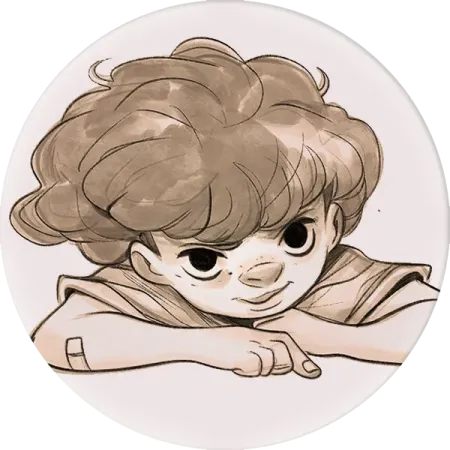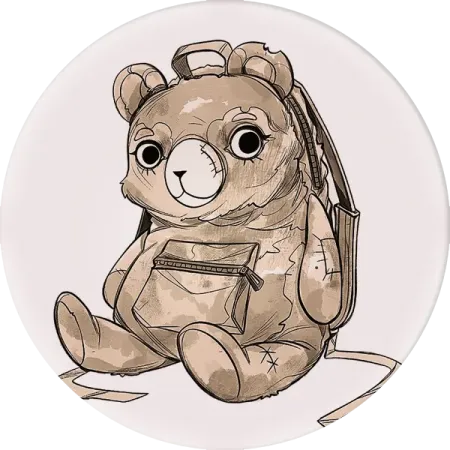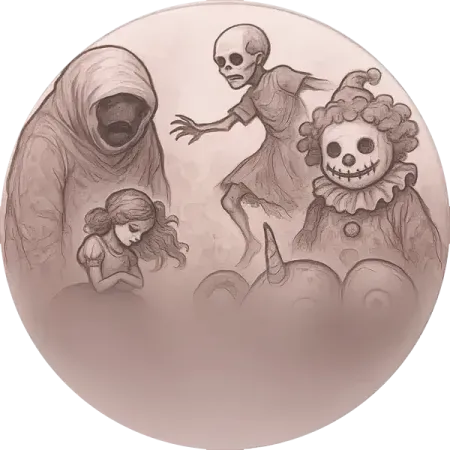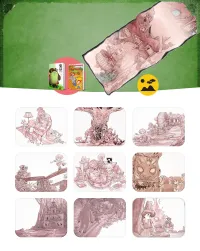The Ghost Mansion
The house is quiet. Too quiet.
Anne feels that the silence
isn’t coming from outside—
it’s inside her.
The thought of Heino and his gang wouldn’t leave them in peace. What could the old scoundrel be up to now? Would they make it to the Ghost Mansion? Or was the trap waiting just around the next bend? Every sound made them jump, every shadow looked like a spider. Pale with tension, they crept between the trees, constantly expecting an ambush.
It’s no surprise, then, that when they finally reached the old, crumbling building, what they felt was more relief than fear. No doubt about it — they had arrived at the Ghost Mansion!
Everything around them spoke of ruin and decay, just as you’d expect from a house full of ghosts. The yard was choked with weeds and bushes taller than a person. Ivy and wild vines crawled up the walls, and the windows were barely visible — most of them gaping like the hollow eyes of a skull. Roof tiles had fallen away, and the chimneys too. On what used to be a dainty veranda paved with large flagstones, green lizards now strutted like they owned the place. It all looked as if an earthquake had just passed. Anne was ready to leap with joy. At last! Finally!
She approached the double front doors and reached out to open them. Pouchy, as usual, chose to hold back.
“Um, don’t you think that might be a little dangerous?” she tugged at Anne. “What if the ghosts are home?”
“To be honest, I have no idea,” Firecurl replied thoughtfully. “But when I think about it — that mysterious voice has saved us twice already… I’m sure it won’t abandon us this time either. Don’t you think?”
“Well, a jug goes for water once, it goes twice... you know what happens the third time, right? If I were you, I wouldn’t charge in before trying to find out a little more about these... thugs.”
Reflections on the scene
⸻ ❦ ⸻
– ❦ –
The Ghost Mansion marks a turning point in the story’s emotional architecture. After a long and tense journey, filled with uncanny threats and bizarre encounters, the characters finally reach the haunted house itself — the epicenter of fear. Its decaying facade, overgrown garden, and crumbling roof echo classic haunted house tropes, but the dread here is more existential. This is not just a ghost house — it’s the house of memory, of repressed pain, of guilt made manifest.
For the first time, we see all the ghosts together. And more importantly, we hear them speak — not in riddles or animalistic snarls, but in articulate, venomous voices. Their words are full of hate, but that hatred is not random. It is targeted, specific. They know Anne. They remember. And they blame her. At this point, she still has no idea why. But the reader senses: this is not a misunderstanding. This is reckoning.
One ghost, though, deviates from the chorus. The skeletal woman in the hood, despite her ghastly appearance, shows a flash of doubt. Her suggestion — to explain, to speak — is the first spark of possible redemption. It is a moral crack in the monolith of hate. And it’s through such cracks that truth — and change — eventually come. The scene quietly plants that seed.
The Ghost Mansion is not just a setting — it’s a confrontation. The journey inward has begun, and with it, the real cost of memory starts to unfold.






